10 Amazing Facts About Flamingos For Kids (2024 Updated)
Introduction
Flamingos are fascinating animals found in America and Afro-Eurasia. With their long legs and pretty pink feathers, one might even say they’re the life of the (bird) party! So it’s no surprise that a group of flamingos is called a flamboyance.
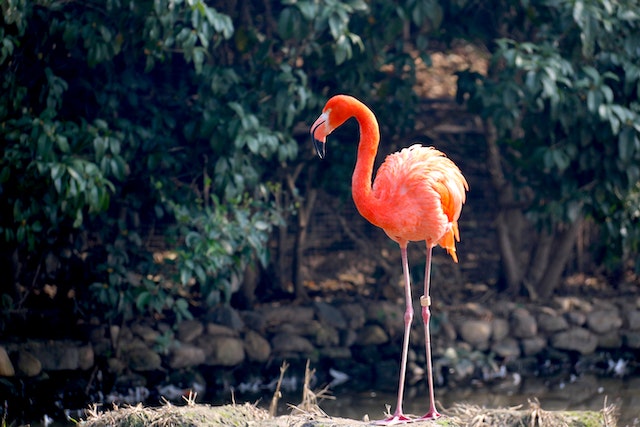
These showstoppers aren’t born pink, though. Baby flamingos are white-gray, and fuzzy. They eventually grow up to develop their distinctive pink shade. Want to know how? Keep reading!
Scientific classification
- Kingdom: Animalia
- Phylum: Chordata
- Class: Aves
- Order: Phoenicopteriformes
- Family: Phenicopteridae
Facts about flamingos for kids
Why flamingos stand on one leg most of the time
No, they’re not getting ready for a hopping contest (haha). Researchers have found that when flamingos stand on both legs, they use up more energy and, as a result, get tired faster.
So, unlike humans who get tired after standing on one leg for some time, flamingos are more comfortable using just one of their long legs.
Talk about muscle power!
What makes them pink?
Now since we know that flamingos are not born pink, what gives them that color once they’re adults?
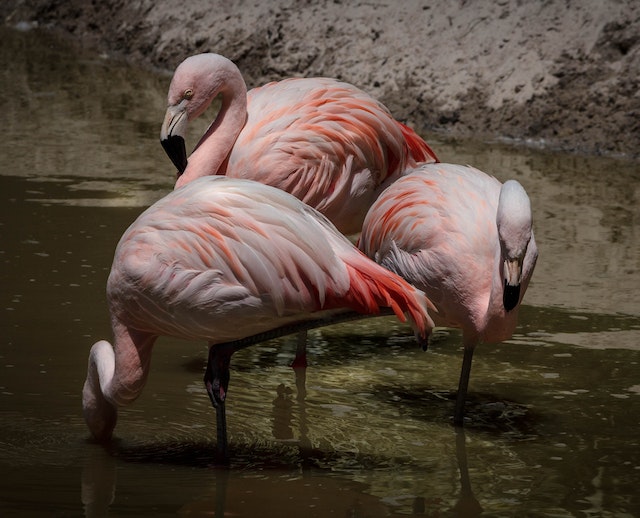
Flamingos get their pink color from theri food. They really are what they eat!
Many plants produce red, yellow, and orange pigments naturally. These are called carotenoids and are what makes carrots orange and ripe tomatoes red. Some algae also contain carotenoids. Brine shrimp feed on these algae. Flamingoes feast on both the algae and brine shrimp.
And voila! Their feathers turn pink over time.
Do you think a flamingo that eats tomatoes would be red in color?
Can flamingos fly?
Yes, absolutely! Although we see them on the ground most of the time, flamingos travel to breed or migrate. When the seasons change and it gets colder, these birds seek out warmer, lower-altitude areas for the winter. I relate to flamingos in this aspect!
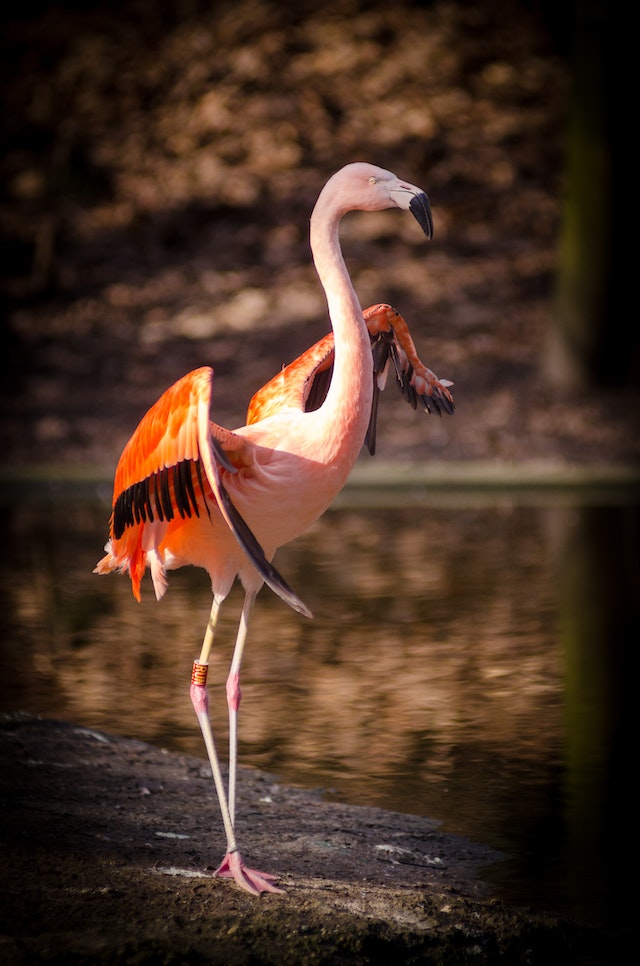
If they have to fly long distances, they fly at night.
Because of their webbed feet, flamingos can run on water. This helps them gain speed and momentum before taking off. Much like an airplane on the runway, don’t you think?
Where do flamingos live?
Most flamingos are found in shallow saltwater or brackish waters (a mix of freshwater and saltwater). But, there are some that prefer to raise their young in extremely salty waterbodies. These waters are called alkaline or soda lakes.
Most animals find these soda lakes uninhabitable because the corrosive salts found in it can burn the skin.
Scientists believe that flamingos’ tough leg skin helps them survive in these harsh environments.
Flamingos build volcano nests
Not actual volcanoes, mind you, but ones made from mud. The shape of the nest looks like a mini volcano made out of mud. It is large enough to host one egg. Both the parents take turns building the nest and incubating the egg.
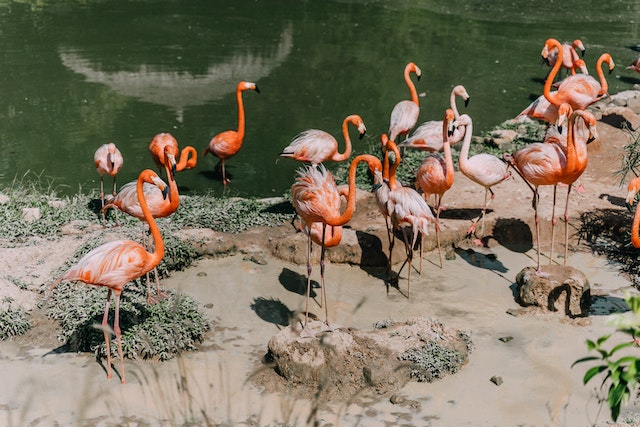
So next time you forget a science project, dig up your old paper volcano, paint it brown and say you built a flamingo’s nest! (Haha, just kidding)
What do flamingo chicks feed on?
Unlike the adult birds, baby flamingos feed on “crop milk”. It is the milk produced by the adult flamingo in a part of their throat called the crop. This milk is then brought up through its mouth and fed to the little one.
It doesn’t sound like the most fun thing to have, I know, but they’re filled with proteins and fats. Both parent birds can produce crop milk for as long as the baby needs.
How do flamingos sleep?
Believe it or not, flamingos can fall asleep on their one-legged stance! The position is so comfortable for them that they can stand long enough to catch a few hours of sleep!
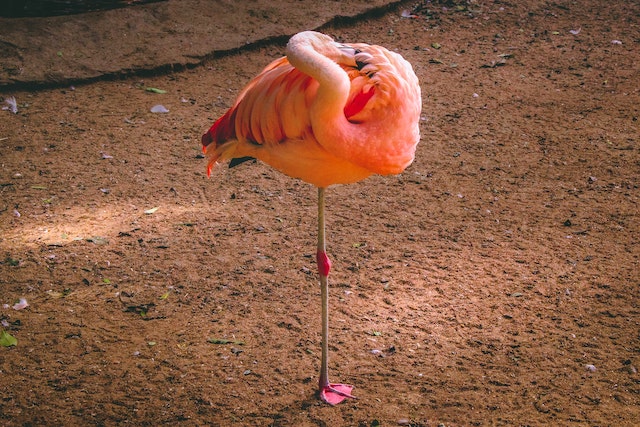
Birds lose body heat through their limbs. So, scientists believe that flamingos stay in this position to help conserve heat. They tuck one leg into their abdomen while the other supports the body.
Comfy and toasty warm. Sounds like a dream, no?
Can flamingos REALLY bend their knees backward?
Don’t be fooled, flamingos can’t bend their knees that way. What you’re actually seeing is the bird’s ankle! Flamingos’ ankles are so far up their legs that what we assume to be their knees when they bend their legs are actually their ankles!
Flamingos’ knees are so high up their legs that they’re hidden by their body and feathers. Wild, isn’t it?
How do flamingos eat?
Flamingos feed on small food – algae, brine shrimp, fly larvae, small seeds, and other plants and animals they find in the shallow waters. This, coupled with their huge, curved beaks makes you wonder. How do these guys manage to eat properly?
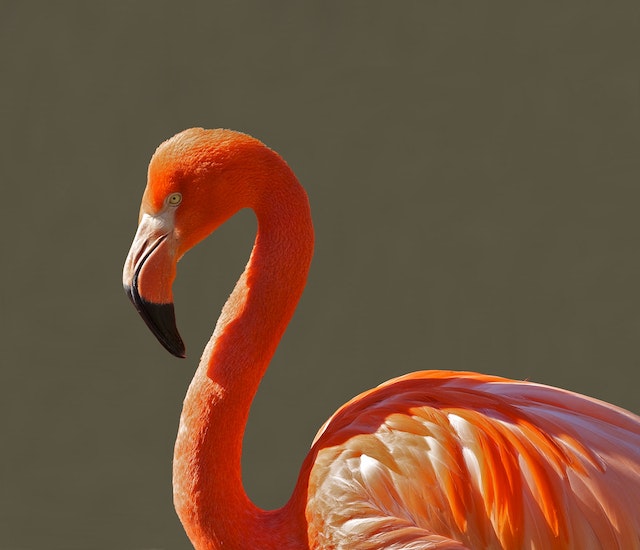
Well, they have a special technique to feed.
When it’s feeding time, a flamingo will tilt its head upside down in the water with the bill pointed towards the feet. It then swings its head from side-to-side so its tongue can pump water in and out of the bill. There are also comb-like plates along the edge of the bill. This creates a filter that allows water to move out and keep the food in.
Interesting, isn’t it?
Are there different types of flamboyances?
Yes! There are six types of flamingos found all over the world. The most common type is the lesser flamingo. They’re found mainly in eastern and southern Africa and India.
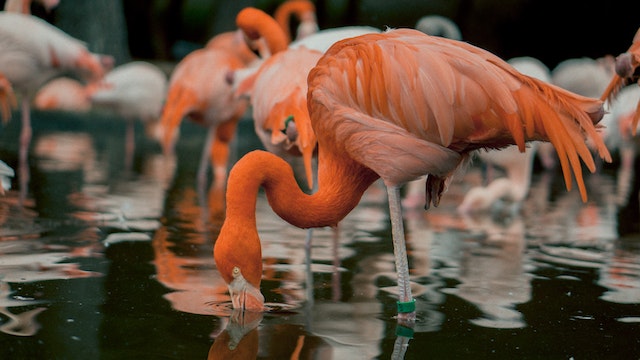
Chilean, Andean and James’s flamingos are found exclusively in South America. Andean flamingos are the rarest of them all, with only around 40,000 birds making up this type.
Then, there are Chilean and greater flamingos. Greater flamingos are found in Africa, Europe, and Asia. They are the largest and tallest of the species.
Conclusion
Well, I must say I know a lot more about flamingos now than at the start of this article. They are truly fascinating creatures.
For me, I think the most interesting fact about them was how they build mud volcanoes for their eggs. This is a rare phenomenon, wouldn’t you say? I’ve only seen eagle and crow nests and they’re always made of sticks.
Moreover, how cool is it that their food literally make them who they are?!
If you find any more cool facts about flamingos not stated in this article, comment below! We’d love to learn more!
